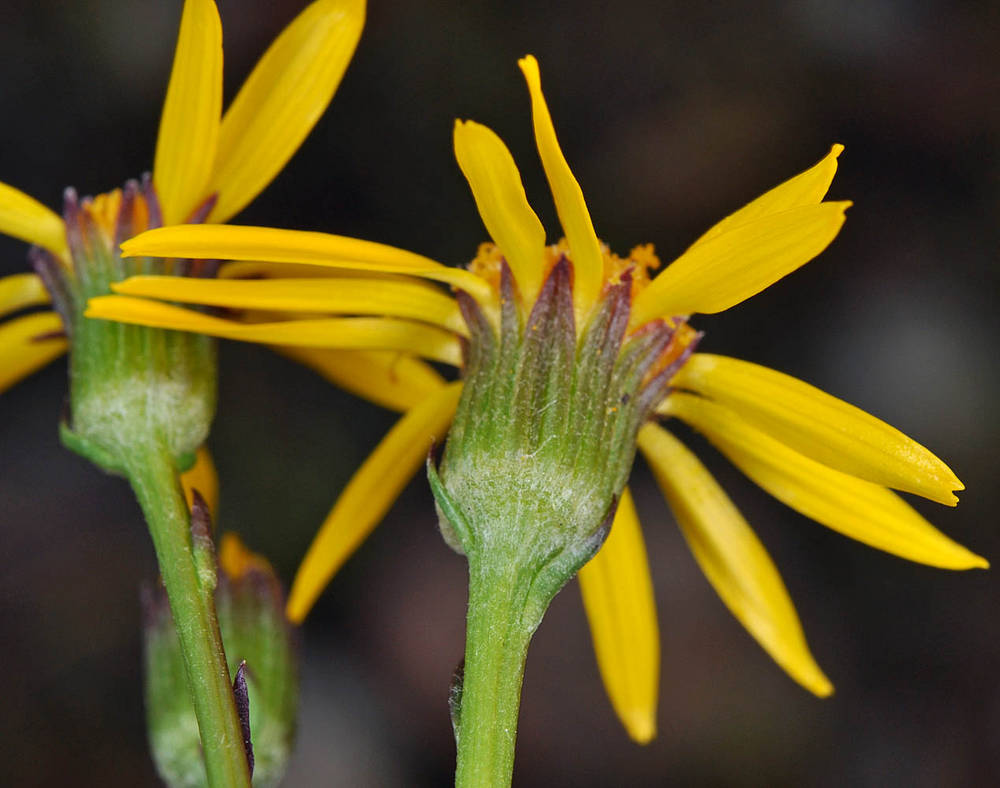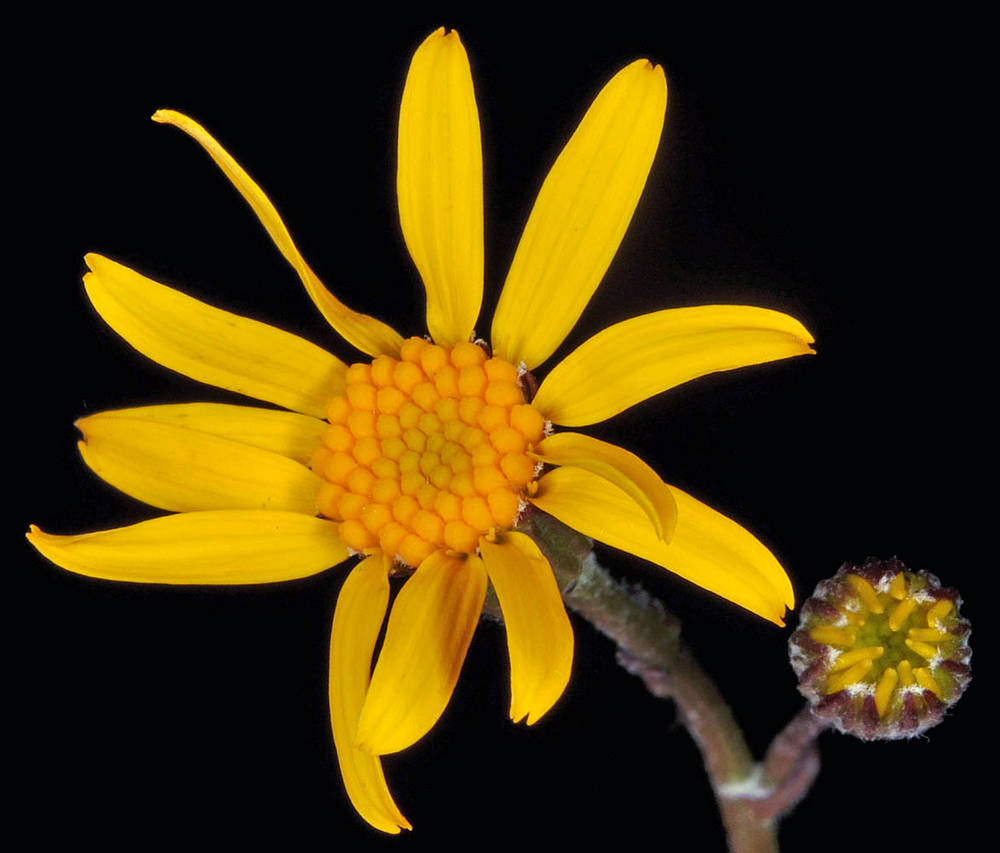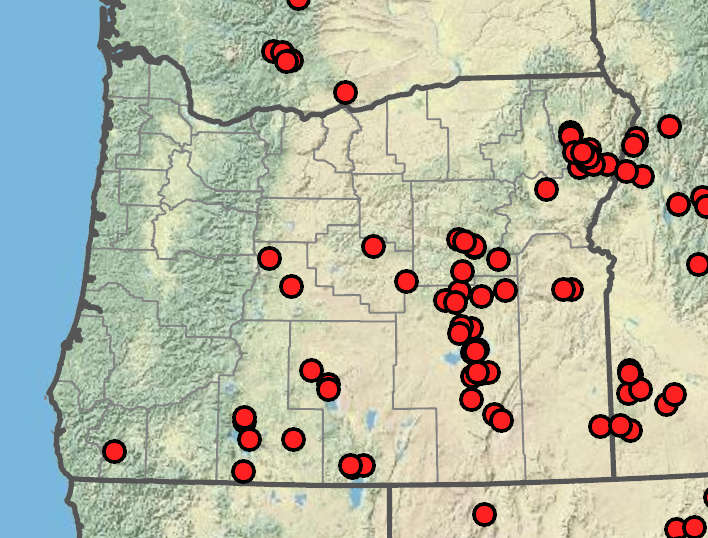Packera streptanthifolia
Packera hesperia
cleftleaf groundsel, Rocky Mountain butterweed, Rocky Mountain groundsel
serpentine groundsel, Siskiyou butterweed, western ragwort
1 or 2–5, clustered, glabrous or sometimes sparsely pubescent near base and in leaf axils.
1, glabrous or sparsely tomentose.
blades oblanceolate to orbiculate; thick; turgid, bases tapering to contracted;
margins dentate, dissected; entire, subentire or weakly lobulate;
surfaces usually glabrous, sometimes pubescent, petiolate.
blades ovate, oblanceolate, or spatulate, bases tapering, sometimes obtuse;
margins entire, subentire, or dentate, petiolate.
similar to basal, gradually reduced, petiolate or sessile.
lower similar to basal; middle and upper abruptly reduced and bract-like, sessile and clasping.
campanulate.
cylindric;
bractlets narrow, red-tinged.
8 or 13;
rays 5–10 mm.
(8)13;
rays 6–10+ mm; deep yellow.
35–60;
corolla tubes 2–4 mm;
limbs 2.5–4 mm.
35–50+;
corolla tubes 2.5–3.5 mm;
limbs 3–4 mm.
(8)13 or 21, 4–7+ mm, green;
tips sometimes anthocyanic;
surfaces glabrous.
(13)21, green;
tips red or dark red;
surfaces densely tomentose basally.
conspicuous.
conspicuous.
1–2.5 mm, glabrous;
pappi 3–6 mm.
1.5–2 mm, glabrous;
pappi 5–6 mm.
2–20+; in corymb- or subumbel-like arrays;
peduncles glabrous or sparsely tomentose, bracteate.
1–4+; in corymb-like arrays;
peduncles densely lanatetomentose;
bracts red-tinged.
=46, 92.
=46.
Packera streptanthifolia
Packera hesperia
Forests, open meadows, and valleys in dry to damp loamy soils. Flowering May–Aug. 400–2900 m. BR, BW, ECas, Lava, Owy, Sisk. ID, NV, WA; north to Yukon, northeast to Saskatchewan, east to WY, southeast to NM. Native.
Packera streptanthifolia includes weakly defined “phases” that have been treated as distinct species or as varieties. Characteristics used to define those taxa often overlap and are difficult to distinguish; some phases grade into each other.
Serpentine, open woodlands. Flowering Apr–Jun. 300–1400 m. Sisk. CA. Native.
Until collections of this species were made in Del Norte County in California, Packera hesperia was known only from two counties in southern Oregon. It has since been listed as a species of conservation concern in California.
Debra Trock
Debra Trock





